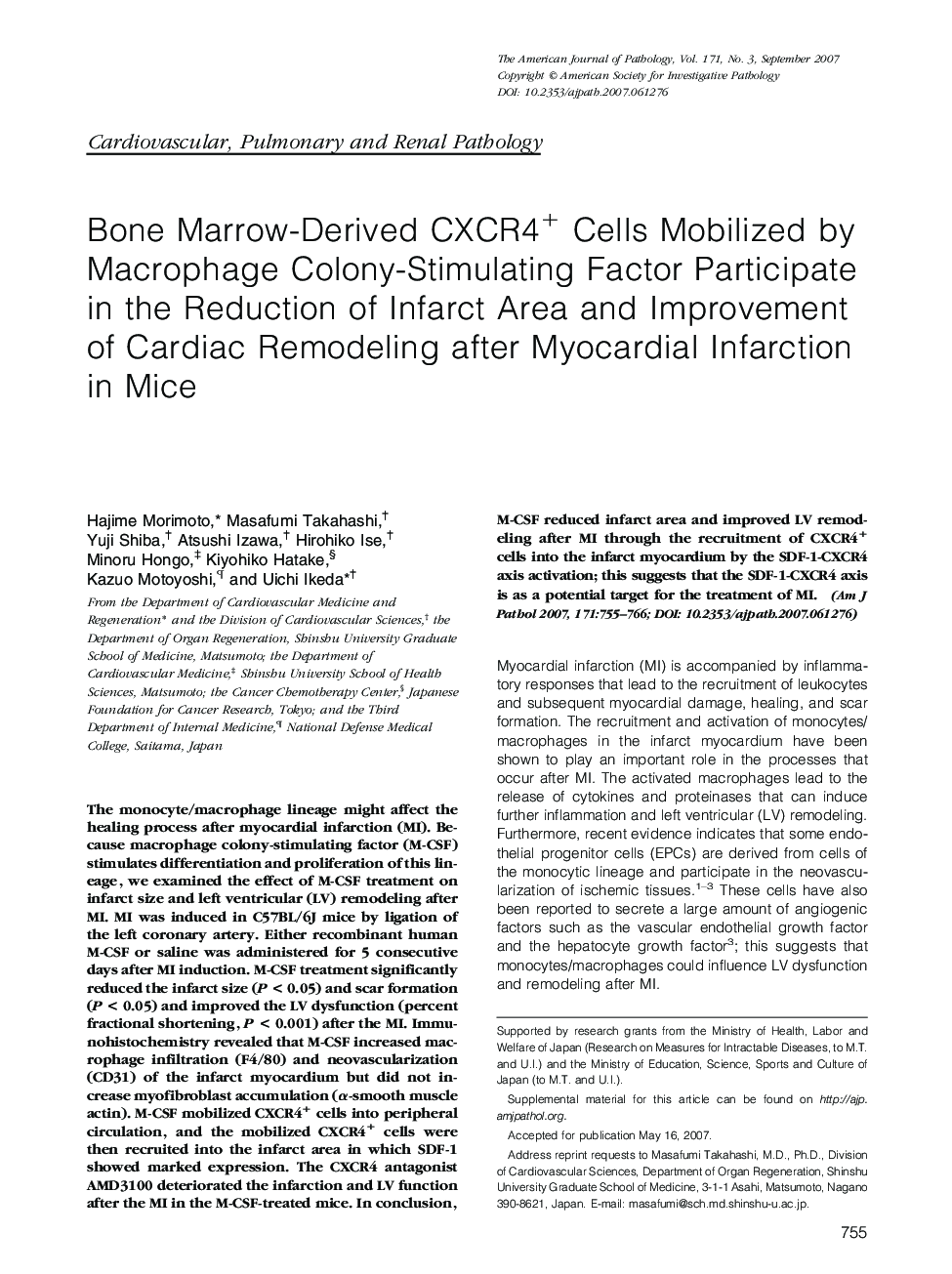| Article ID | Journal | Published Year | Pages | File Type |
|---|---|---|---|---|
| 5939074 | The American Journal of Pathology | 2007 | 12 Pages |
Abstract
The monocyte/macrophage lineage might affect the healing process after myocardial infarction (MI). Because macrophage colony-stimulating factor (M-CSF) stimulates differentiation and proliferation of this lineage, we examined the effect of M-CSF treatment on infarct size and left ventricular (LV) remodeling after MI. MI was induced in C57BL/6J mice by ligation of the left coronary artery. Either recombinant human M-CSF or saline was administered for 5 consecutive days after MI induction. M-CSF treatment significantly reduced the infarct size (P < 0.05) and scar formation (P < 0.05) and improved the LV dysfunction (percent fractional shortening, P < 0.001) after the MI. Immunohistochemistry revealed that M-CSF increased macrophage infiltration (F4/80) and neovascularization (CD31) of the infarct myocardium but did not increase myofibroblast accumulation (α-smooth muscle actin). M-CSF mobilized CXCR4+ cells into peripheral circulation, and the mobilized CXCR4+ cells were then recruited into the infarct area in which SDF-1 showed marked expression. The CXCR4 antagonist AMD3100 deteriorated the infarction and LV function after the MI in the M-CSF-treated mice. In conclusion, M-CSF reduced infarct area and improved LV remodeling after MI through the recruitment of CXCR4+ cells into the infarct myocardium by the SDF-1-CXCR4 axis activation; this suggests that the SDF-1-CXCR4 axis is as a potential target for the treatment of MI.
Related Topics
Health Sciences
Medicine and Dentistry
Cardiology and Cardiovascular Medicine
Authors
Hajime Morimoto, Masafumi Takahashi, Yuji Shiba, Atsushi Izawa, Hirohiko Ise, Minoru Hongo, Kiyohiko Hatake, Kazuo Motoyoshi, Uichi Ikeda,
